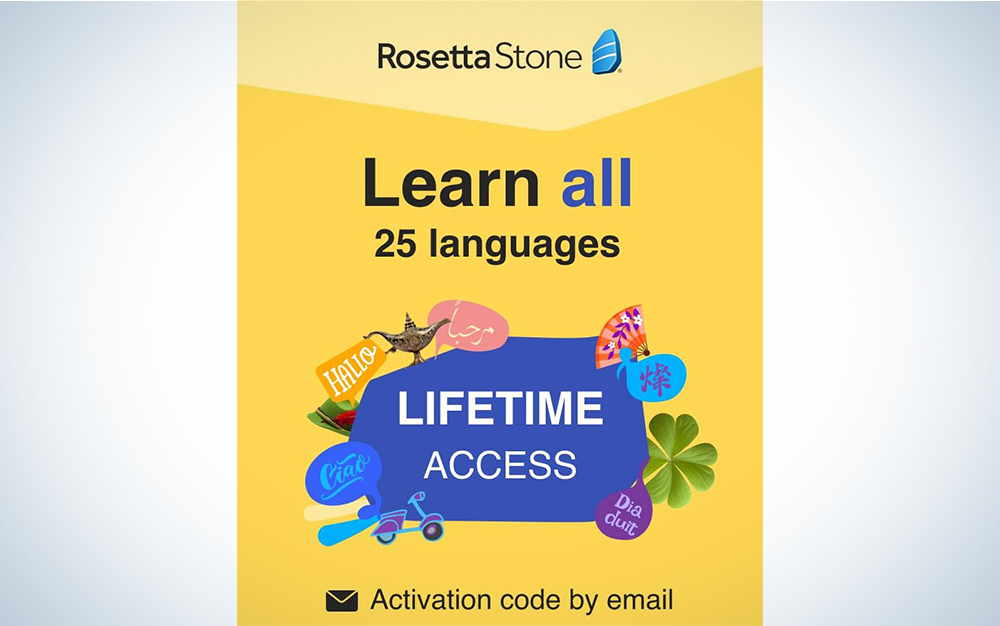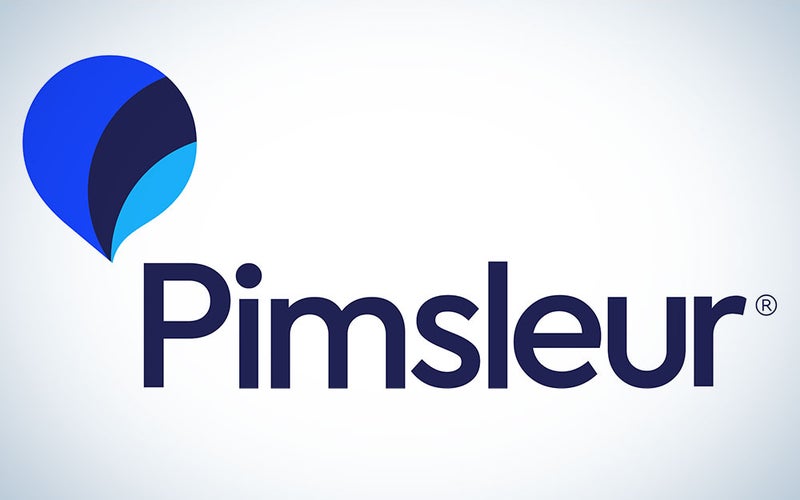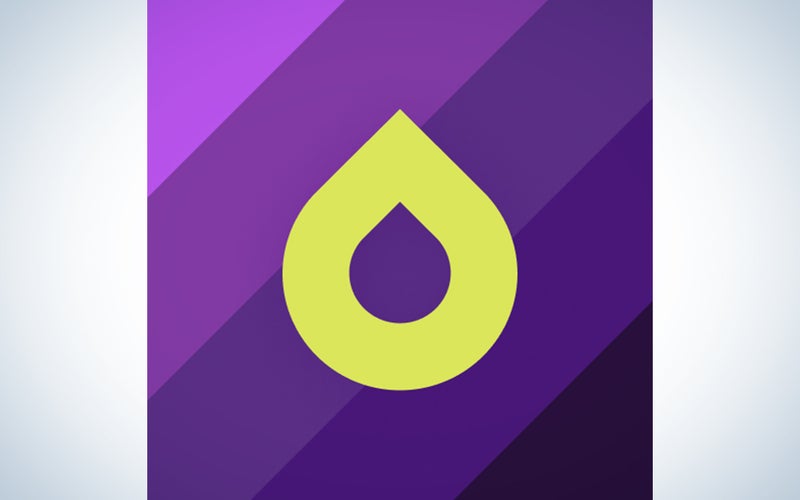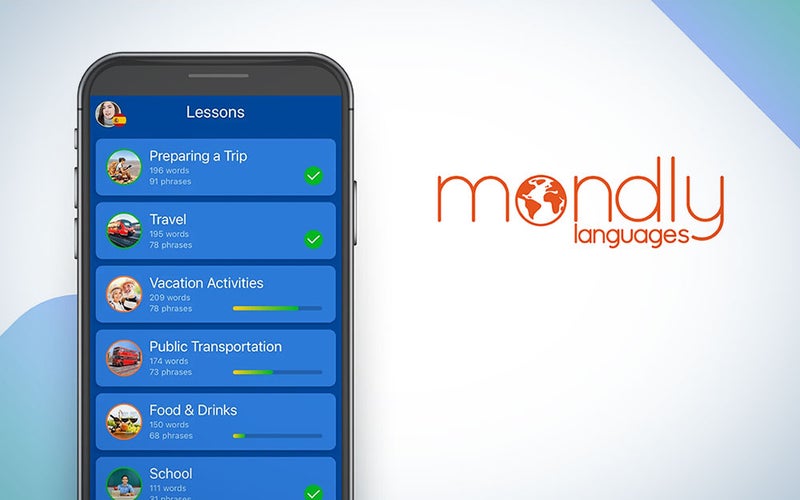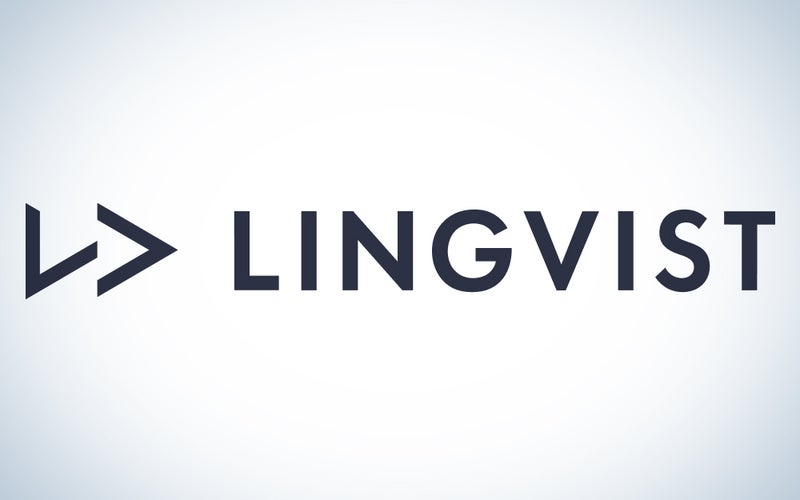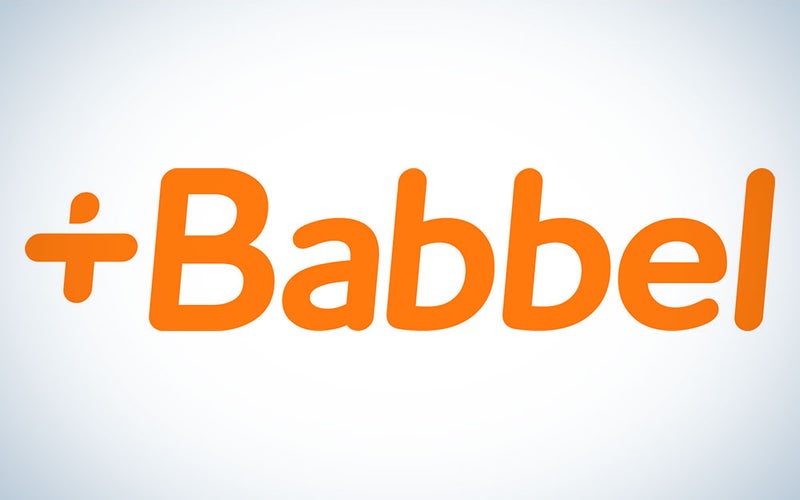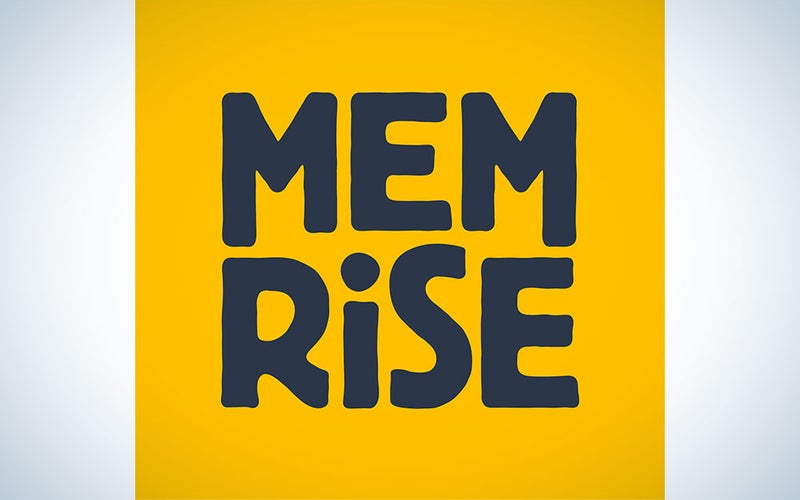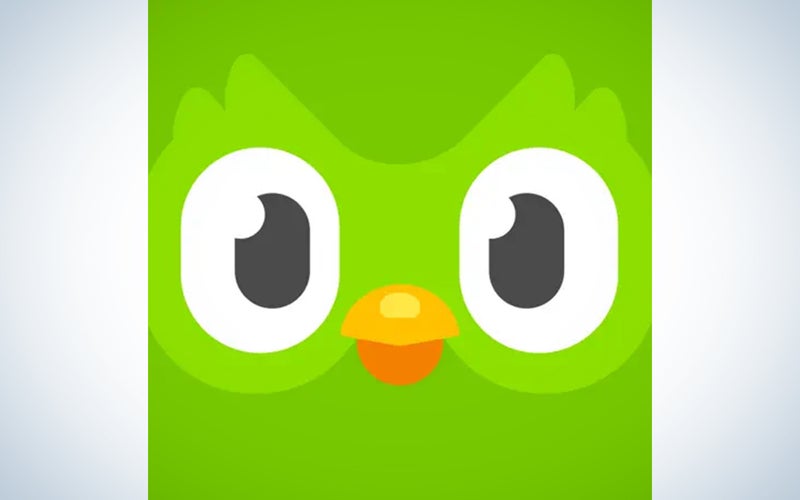We may earn revenue from the products available on this page and participate in affiliate programs. Learn more ›
Many of us want to learn a second language (or even a third or fourth) but don’t have the time to enroll in an intense course with a live instructor, so language learning software might be the answer. We need something that works with our schedule and pace, teaches us effectively, and is fun to do so that we don’t lose motivation. That’s the goal of all language learning software, which has existed as a product category since the early days of CD-ROM infotainment, right next to Microsoft Encarta in the software section of your local computer store. These days, language learning software has become faster, easier, and mobile, designed for use not just at home on a desktop or laptop but also on tablets and phones. The number of choices has also increased exponentially.
What should you choose? That’s going to depend on what you need. There are clear leaders among the best software out there, but others fill specific desires—like phrases for travel or pronunciation practice—better than the “best” software might. While the most commonly spoken languages in the world might be easy to find, there are also some less common languages that you need to know before bothering to look for software, if you specifically need to learn that niche language. All that information is below. They say talk is cheap, but it’s worth your weight in gold if you’re conversing in another language, whether as a traveler or resident. Get a jump on your Japanese, make your Spanish super, or become a Hindi hero with the best language learning software on the market.
- Best overall: Rosetta Stone
- Best mobile: Pimsleur
- Best interface: Drops
- Best for phrases: Mondly
- Best for vocabulary: Lingvist
- Best challenge: Babbel
- Best value: Memrise
- Best free: Duolingo
How we chose the best language learning software on the market
We scoured reviews from all over the Internet—both professional reviewers and real-world users—to determine what software was working, fun to engage with, and easy to understand. We then divided the best choices into categories based on the particular needs of different learners so that the folks who want to learn a couple of dozen phrases in French for their upcoming trip to Montreal aren’t looking at the same thing as those who need to become fluent in Japanese to move to Tokyo for work. All of the software below is good, but the best for you is determined by what you know you need.
The best language learning software: Reviews & Recommendations
I can tell you this: These are your best choices. Estas son tus mejores opciones. Это ваш лучший выбор. これらが最良の選択です。
Best overall: Rosetta Stone
Rosetta Stone
Specs
- Platforms: iOS, Android, Web
- Cost: $11.99 per month (3 months, one language), $7.99 per month (one year, one language), $179 (lifetime, all languages)
- Languages: 25
- Features: First lesson in each language free, optional online tutoring, personalized learning plan, real-time pronunciation feedback
Pros
- Proven methodology
- Ample human support
- Lots of language choices
- Lesson progression is logical, and difficulty scales well
Cons
- Mostly stops at “business-level” proficiency; lacks advanced content
- Lessons can be repetitive
A trusted name in digital language learning—the first desktop computer Rosetta Stone software came out over 30 years ago—is now the best among apps. Rosetta Stone’s been using a semi-immersive methodology since its inception. Instead of teaching translation of vocabulary, it uses images, texts, and spaced repetition to teach vocabulary, grammar, and pronunciation. This methodology is a proven one; basically, you learn by doing variations of flashcards but with a variety of prompts. Your attempts are scored, and various items the program is sure you’ve learned are removed, while new things are brought in.
Rosetta Stone aims to get you from beginner to intermediate—also referred to as “conversational”—level quickly and efficiently. It’s not really built for true fluency, as its aim is language for business use. However, it’s one of the best ways to get enough of a knowledge base in a new language to start effectively communicating with native speakers of that language and then learning the next phase through experience. It doesn’t have the most languages on the market, but the 25 languages and variants cover a tremendous percentage of global speakers. There are also opportunities for tutoring or live lessons with a human via livestreams, which are huge value-adds.
The app itself is super-smooth and intuitive, and the lessons neither feel too short so as to be forgettable nor too long so as to be a chore. You can practice pronunciation through the microphone on your phone, tablet, laptop, or an attached/wireless mic. The interface isn’t particularly graphic, without the whimsical presentation elements of Duolingo or Drops, which may appeal to some and less to others. However, overall, the methodology is proven, the price points are extremely reasonable in the paid app space, the content gets you to an effective knowledge base quickly, and the process is easy to maneuver through. For these reasons, Rosetta Stone has the best overall language learning software.
Best mobile: Pimsleur
Pimsleur
Specs
- Platforms: iOS, Android, Web
- Cost: $19.95 per month (one language), $20.95 per month (all languages), $199.95 per year (all languages)
- Languages: 51 including English as a Second Language options from a variety of base languages
- Features: car mode, offline mode, Alexa compatibility
Pros
- Most extensive collection of languages on the market
- Proven Pimsleur method
- Rigorous lessons
- Podcast-like structure allows you to study hands-free
Cons
- One of the highest price points on the market
- Lessons are a time commitment
Pimsleur is a name not just of a product line but of a language-learning methodology. Paul Pimsleur, a mid-century linguist, invented an entire pedagogy around how to teach foreign languages, and his company has been selling versions of that method ever since. Before the Internet, you could get Pimsleur CDs. Now, you can simply get them in a mobile or web app.
Pimsleur’s lessons have been refined for decades, and the approach is really only for serious learners. Each lesson is about 30 minutes. You can do these lessons in chunks if you want, but they’re best done in a single go. The methodology is mostly teach, repeat, wait, repeat. The focus is listening and speaking rather than choosing options in an app (though there is some of that as well). If you commute by car, this method allows you to practice most of a lesson hands-free and finish by doing some of the quizzes later. You can listen to the lessons like podcasts, so even if you’re on public transport, you can say the words in your head to help you memorize them.
The drawbacks of Pimsleur are that the methodology isn’t for everyone—some want a more pick-up-and-put-down experience—and the cost is high. Even with the yearly discount, the monthly costs are over $16 a month, much more than competitors. However, if the audio-based methodology works with your lifestyle–if you can substitute language lessons for music or podcasts while on the go—this is one of the best mobile apps you can get for language learning because it doesn’t necessarily have to occupy your hands.
Best interface: Drops
Drops
Specs
- Platforms: iOS, Android, Web
- Cost: $12.99 per month, $69.99 per year, or $159.99 lifetime
- Languages: 50
- Features: All lessons available for free if you wait 10 hours between lessons
Pros
- Great for vocabulary-building
- Fun, simple, clear interface
- Large variety of languages, including some endangered languages
- Quick lessons
Cons
- No grammar practice
- Cannot listen to or correct your pronunciation
Drops, owned by education software and app company Kahoot!, is meant mostly as a vocabulary builder, and it’s an excellent, fun, and easy-to-use one. The interface is like a puzzle game, where you tap “drops” that match the word or phrase you’re practicing. It’s kind of like a much more enjoyable version of a CAPTCHA verifier with fewer fuzzy pictures. The free version is the same as the paid version; the paid version simply removes the wait between lessons. The wait with the free version is 10 hours.
That’s really all there is to Drops. The language selection is extensive (50 languages), and includes some rare and endangered languages (such as Ainu, a language of indigenous Japanese people, and Esperanto, a “universal second language” invented in the 1880s). But you’re simply going to be drilling words and phrases repeatedly. It’s a fun, quick way to build out your knowledge base, but it won’t help you speak or adjust your grammar. Drops works best as a supplement to another, more fully fleshed-out language learning software.
However, especially if you don’t plan to spend any money on it, Drops is an easy recommendation for people who want a fun, easy-to-use drilling software with an easy-to-use interface.
Best for phrases: Mondly
Mondly
Specs
- Platforms: iOS, Android, Web
- Cost: $9.99 per month (one language), $47.99 per year (one language), $479.99 per year (all languages, often deeply discounted)
- Languages: 11
- Features: conjugation tables, real conversations to practice with, AR and VR content
Pros
- Very engaging visual interface
- Wide variety of drill types
- Good (and fun) supplemental materials
- Good depth within individual languages
Cons
- A bit of style over substance
- Not many languages
Mondly is a really great phrase driller. Like Drops, Mondly is colorful, fun to use, easy to navigate, and has some good free content. Unlike Drops, it has a lot more grammar content. In fact, you can highlight any verb to see different conjugations of that verb. Like Drops, there’s a wait between lessons if you’re doing the free version (one a day). Drops is more fun to practice with, but Mondly has more depth of learning as it also teaches you grammar.
Unfortunately, there are only 11 languages in Mondly, meaning if you are not interested in a widely-spoken, popular language, it may not be any help for you at all. The free version doesn’t really teach enough in one lesson for the one-lesson-a-day experience to be much help, though. The vast majority of content is gated behind the “Premium” tier. The price is quite low, and the “all access” yearly cost is rarely actually set to its listed cost. (At the moment of writing, it was reduced 90% to the same cost as the on-language yearly price.) However, a lot of other programs offer far more languages in their “all access” price.
Overall, Mondly is really pleasant to practice with. If you want to learn useful travel or business phrases in the languages that the program offers, the paid tier price is quite reasonable, and the lessons are fun with lots of interesting additional content.
Best for vocabulary: Lingvist
Linguist
Specs
- Platforms: iOS, Android, Web
- Cost: $9.99 per month, $79.99 per year
- Languages: 16
- Features: Stats checking, flashcard drills, mute words you know
Pros
- Excellent vocabulary-building system
- Paid version included access to all languages
- Word lists are available so you know what you need to learn
- Good progress tracking and record-keeping
Cons
- Doesn’t do much beyond vocabulary
- Interface is a bit bland
The best flashcard language app on the market, Lingvist drills down on vocabulary drills—and does them very, very well—but offers little beyond that. You won’t find pronunciation, conversation, or grammar practice in Lingvist, but you will learn new words.
The flashcard drills use AI to determine when you’ve figured it out. As you correctly identify the words more commonly, they’ll cycle out and count as “learned” in your history. You can also build your own word lists for drills if you know what you want to study. If you encounter a “new” word that you know you already know, you can mute it and let the system know you don’t need to practice it. The built-in lists are topic-based.
The most useful feature of Lingvist is being able to view your learned and muted words as comprehensive word lists. You can also check your stats to learn info on words learned, words reinforced, time spent, cards drilled, and more.
If vocabulary-building is your main goal, Drops is beginner mode, but Lingvist is an expert. The app is a bit visually dry, but the information is incredibly useful, and the stat-tracking really helps you both feel a sense of accomplishment and nail down what you need to work on.
Best challenge: Babbel
Babbel
Specs
- Platforms: iOS, Android, Babbel
- Cost: $14.95 per month (one language), $66.90 per six months (one language), $89.40 per year (one language), $349 lifetime (all languages)
- Cost with Babbel Live: $99 per month (one language), $209 per three months (one language), $359 per six months (one language), $599 per year (one language)
- Languages: 13
- Features: live lessons (selected languages), podcasts, games
Pros
- An online school-like experience
- Extremely deep content with a wide variety of learning elements
- Lesson structure that lets you learn the topics you want first
- Live online classes for four languages with a separate subscription
Cons
- Low number of available languages
- Might be too intense for some casual/tourism learners
After Rosetta Stone, Babbel is the most recommended language learning software on the market because it’s incredibly deep. If you want to, you can get into really advanced language learning, with niche vocabulary and conversations. It’s not a full substitute for tutoring or immersion, but the system gets you closer to true fluency than any other.
There’s also a ton of ways to learn. There are live lessons, podcasts, games, and videos to reinforce the standard app drills. The depth of content makes up for the fact that Babbel only offers 13 languages. You’ll truly learn those languages if you study with Babbel, though it’s heavily skewed towards European languages (only Indonesian is a non-European option).
Babbel Live, a live video lesson system with trained language teachers, is available for learners of Spanish, French, German, or Italian, though the price isn’t as cheap as the app-based lessons. You’ll get full access to the app for your languages if you sign up for Babbel Live, and the live lessons are easy to schedule, with a lot of slots throughout the day. Having a true tutor to practice with–and get feedback from–is critical to learning a language.
Babbel’s wealth of content for its 13 languages is unmatched. It can really challenge you at the advanced levels. If your goal is to get fluent from the comfort of your phone/tablet/computer, Babbel Live might be the best choice on the market.
Best value: Memrise
Memrise
Specs
- Platforms: iOS, Android, Web
- Cost: $14.99 per month (all languages), $89.99 per year (all languages), $199 lifetime (all languages)
- Languages: 23
- Features: User-created content, non-language memorization lessons, pronunciation practice
Pros
- All languages available no matter the subscription
- Extra user-created content available
- Copious videos of native speakers for pronunciation practice
- Offers non-language memorization lessons
Cons
- Some lessons aren’t available on the web interface
- User-generated content is hit or miss in quality
Memrise is focused on burning the material it presents into your memory. It also emphasizes learning the language as spoken rather than pieces in a vacuum. Add in the fact that all 23 of its languages are available to paid users no matter if they choose the monthly, yearly, or lifetime tiers, and you’ve got a lot of content that is easy to learn at a really good price point, making Memrise the best value choice for users who want to practice multiple languages.
While not the largest language list offered, the 23 languages Memrise has on tap include all of the heavy hitters, even non-Romance languages like Japanese, Chinese, and Yoruba. This variety really helps the value of a subscription. There’s a lot of content available in the free version as it is, but of course, most of the good stuff is behind the paywall. You’ll want to experience Memrise mostly through the mobile app, as some exercises and elements are not available on the web. Additionally, there are some non-language learning options in Memrise, but language is the main focus. The paid version even has offline access, so you can continue when you’re away from WiFi and/or have a weak cellular connection.
Adding to the value of Memrise is the frequent promotion, especially on the yearly subscription, which has been available for as low as $30 for a year. If you want to get an even better deal, wait for a big sales holiday (like Cyber Monday) and check to see if you can get a big discount. But even at its maximum price, Memrise is an excellent value.
Best free: Duolingo
Duolingo
Specs
- Platforms: iOS, Android, Web
- Cost: $7 per month (Optional)
- Languages: 39
- Features: Game-like interface, nearly all content is free (ad-supported with “lives” system for refreshes)
Pros
- Tons of languages
- Colorful game-like interface
- Social elements mean you can compete with your friends and family
- Almost all content is available for free
Cons
- Easy to lose motivation with repetitive exercises
- Learning can be shallow and not useful for conversation
Duolingo is by far the most popular language learning software on the planet, and it’s for a good reason: nearly everything in the app is available for free. All 39 languages (for people learning from an English base), every lesson, each and every one of them is free. The way this is done is through ads and a “lives” system where if you fail a lesson too many times, you have to wait in order to attempt any lessons again–or you can pay a small amount of money to use the app again. Additionally, Duolingo offers a paid subscription for $7 per month that lets you do as many lessons as you want, and gives you access to some additional features, such as the beta version of a ChatGPT-powered chatbot.
The learning experience with Duolingo is somewhat repetitive, and it can be really hard to parse grammar and learn pronunciation (though there are “say the word” elements to the lessons). It’s much better at teaching you vocabulary and set phrases. If you want to learn a little about a lot of languages and do it for free, Duolingo’s got you covered. If you want to specialize in one language and learn it fully, it’s harder to do so through this app.
However, no other option gives you as much for nothing as Duolingo, and the social elements (leaderboard and game-like competition) can make the grind-y nature of the lessons more fun. Plus, there’s a bit of accountability: you get a notification when you haven’t done your daily lesson, and streaks push you to maintain daily practice. If you want to spend money to learn, spend it elsewhere (like Rosetta Stone or Babbel), but if you want to dabble for no dinero, Duolingo is your best choice.
What to consider when choosing a language learning software
First of all, you need to make sure that the language or languages you want to learn are offered. Popular, widely-spoken languages of Europe and the Americas are most common (French, Spanish, Italian, Portuguese), while African, Asian, and Middle Eastern languages are harder to find. Check the individual software’s homepages or the app’s free trials to see if your desired language is offered.
Second, do you want an app-only experience, or do you want to learn with a human? Only the more intense programs like Babbel and Rosetta Stone offer live video lessons, so if that’s something you need in order to learn, you’ll be limited. The rest of the pack offers drills, quizzes, and fill-in-the-blank style lessons that can help but may not get you where you want to be with speaking, pronunciation, or grammar.
Lastly, if you want to learn multiple languages, not all of these products offer multiple languages for one price, so make sure that you choose a multi-language product (or a multi-language subscription) if you are trying not just to be bilingual, but tri-, quatro-, or infinity-lingual.
FAQs
Q: What is the best language software to use?
While reviewers and users disagree, the most recommended language software for paid subscriptions were Rosetta Stone and Babbel due to the depth of their content and the multiple ways of learning available, including live lessons. If you’re looking to learn a language for free, Duolingo offers way more at no cost than any other competitor.
Q: Does language learning software make you fluent?
Even the best language learning software isn’t going to get you to full fluency. You need to have conversations in your second language and practice hearing the language at native speed with native pronunciation. Only live interaction with a native speaker can get you all the way there.
Q: Is there a free language learning app?
Nearly every language-learning app offers a free tier, but a lot of them are incredibly limited. Duolingo, the most popular language learning software on the market, is the most complete free experience and the best recommendation for those who don’t want to spend.
Q: What is the hardest language to learn?
The difficulty of a language depends on what language you’re learning from. For example, for a Chinese learner, Japanese might be easier than English, while for a French learner, English is much easier because of similarities in alphabet, vocabulary, or grammar rules. For English speakers, according to Rosetta Stone, the category IV languages (most difficult to learn) are Arabic, Chinese (Mandarin), Chinese (Cantonese), Japanese, and Korean. This is because there are almost no shared elements between the languages–the alphabets, grammar rules, and pronunciation patterns are completely different–and even the cultural elements that inform the language are not close to each other.
Q: What is the oldest language in the world?
While there’s no concrete proof of the single oldest language, the oldest known languages are all languages from ancient civilizations around the fertile crescent: Sumerian and Akkadian. Sumerian is almost 5,000 years old and was spoken in what is now Iraq. Akkadian may be about the same age, though we can’t be sure, and was spoken by a different group in the same area. Egyptian may be even older (there are hieroglyphics that have been dated earlier). The oldest language still spoken today is Greek, which has been traced back about 3,500 years.
Final thoughts on the best language learning software
- Best overall: Rosetta Stone
- Best mobile: Pimsleur
- Best interface: Drops
- Best for phrases: Mondly
- Best for vocabulary: Lingvist
- Best challenge: Babbel
- Best value: Memrise
- Best free: Duolingo
There are a lot of language learning software choices on the market. In fact, the interfaces and experiences of a lot of these apps may be quite similar, largely because of the popularity and influence of Duolingo. All the apps listed above are helpful, and none is a full path to true fluency, but all a great starting point. In the end, the most effective language learning software is the one you consistently use, so try out the free tier of as many of our recommendations as possible. If you are willing to commit, you can turbocharge your learning or simply get a bit of knowledge for your upcoming holiday romp.
Why trust us
Popular Science started writing about technology more than 150 years ago. There was no such thing as “gadget writing” when we published our first issue in 1872, but if there was, our mission to demystify the world of innovation for everyday readers means we would have been all over it. Here in the present, PopSci is fully committed to helping readers navigate the increasingly intimidating array of devices on the market right now.
Our writers and editors have combined decades of experience covering and reviewing consumer electronics. We each have our own obsessive specialties—from high-end audio to video games to cameras and beyond—but when we’re reviewing devices outside of our immediate wheelhouses, we do our best to seek out trustworthy voices and opinions to help guide people to the very best recommendations. We know we don’t know everything, but we’re excited to live through the analysis paralysis that internet shopping can spur so readers don’t have to.
